Key in a search term below to search our website.
Key in a search term below to search our website.
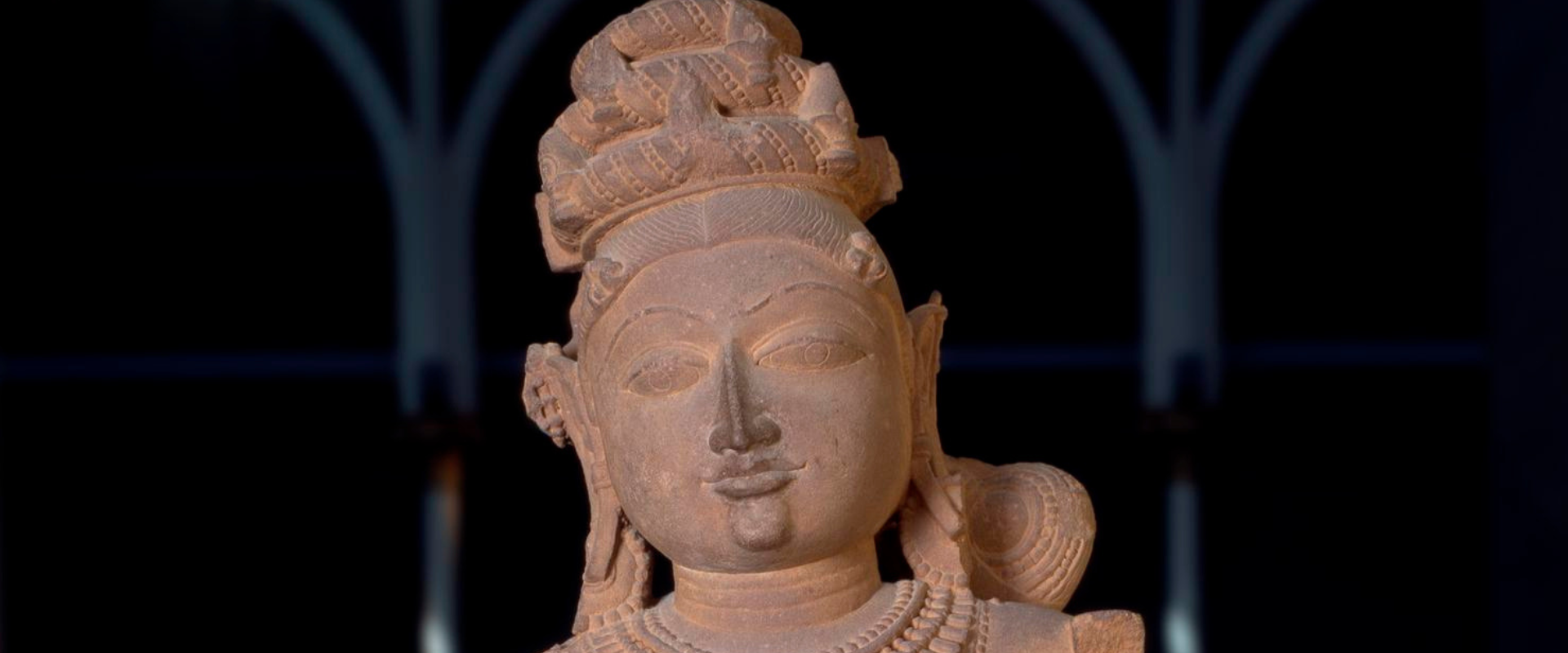
कहानियाँ Kahaniyan of South Asia
The Surasundari can be found on Level 5 in the Traditions in Sculpture gallery at the National Museum of Scotland.
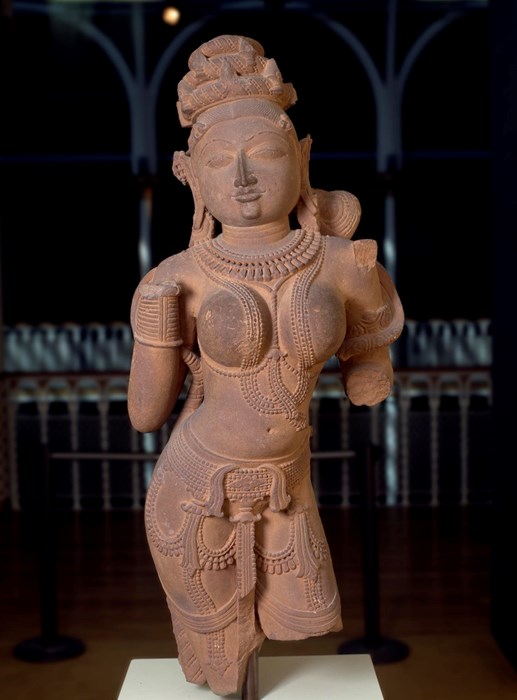
Figure of a Surasundari or divine beauty, wearing elaborate jewellery and with dressed hair, carved sandstone: South Asia, India, Madhya Pradesh, Khajuraho, Candella Dynasty, 11th century (A.1971.704).
At the museum we saw beautiful examples of artwork made from sandstone that have been prevalent in India since ancient times (circa 3200 BC). It was a popular building material at that time which was relatively soft and therefore easy to carve. It was used to construct temples. Interestingly we found that it was used worldwide in the construction of cathedrals, homes, and other buildings.
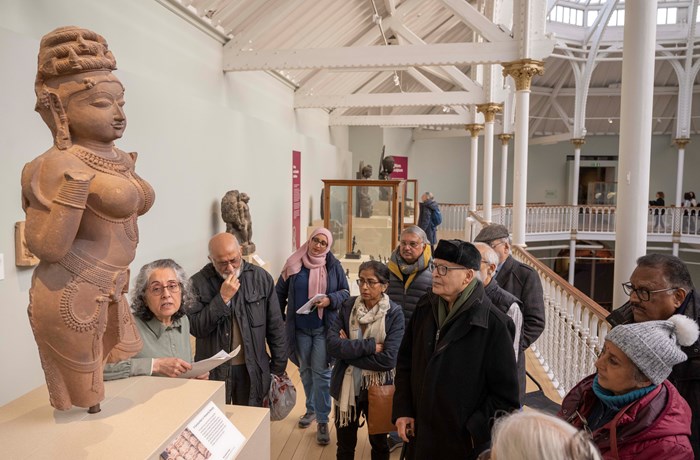
NKS members discuss the symbolism of and the skill involved to create a Surasundari sculpture.
This carving is a Surasundari - an exquisite example of a carved sculpture of a beautiful female form.
Surasundari is a Yakshini {यक्षिणी (female of यक्ष)}. These are beautiful human spirits endowed with some special powers but are not gods in the conventional Hindu philosophy. Those who pray to these demi-gods and please them receive favours in business, agriculture or even love life. Believers can also get beautiful children of their desired gender and intellect.
It is said that some of these Surasundari figures are erotic in nature and that having erotic sculptures or decorative motifs on a temple was protective and auspicious. We discovered during the tour, that at the time of their creation (c.950 – 1050 BC) Hindu people were attracted towards Buddhism which favoured sexual abstinence. So having these kinds of erotic sculptures was thought to be a way of luring them back to the Hindu religion, the temple and encouraging procreation.
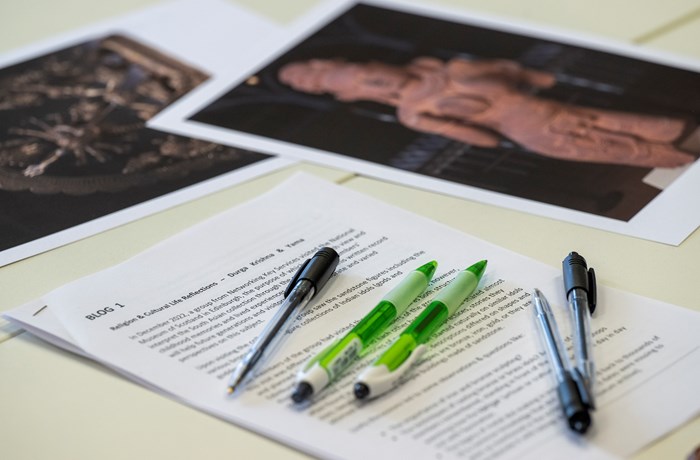
NKS members reading through and editing text for the webpage. ©@NeilHannahphotography
All major Hindu temples in India illustrate this rich tradition of stone carving. This Surasundari is said to come from Khajuraho, a UNESCO World Heritage Site located in Madhya Pradesh, central India.
The Kamasutra, the ancient Indian Sanskrit guide to the art of living written by the wise sage Rishi Vatsyayana, was a source of inspiration for the Khajuraho temples. However, only 10% of the carvings and sculptures are erotic in nature. The rest depict daily activities and are an informed source on health (including sexual health) as intended by its writer.
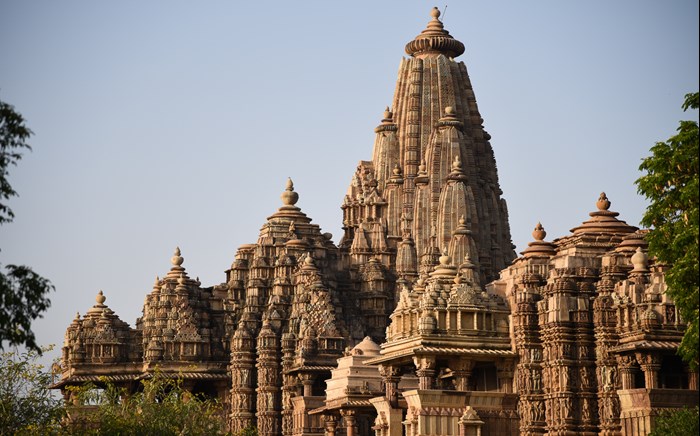
The Kandariya Mahadeva temple, part of the Khajuraho temple complex. ©Wikimedia Commons
The Khajuraho temple complex was built during the reign of the Chandelas of Jejakabhukti, an Indian dynasty in central India. It took over 100 years to complete its different parts. There were 85 temples, of which only 22 remain in existence today. Most of the temples were looted and destroyed by Muslim invaders from the Delhi Sultanates. The main remaining temples include Kandariya Mahadeva, Lakshmana, and Matangesvara.